2020 • Topipittori
FÈLICETTE
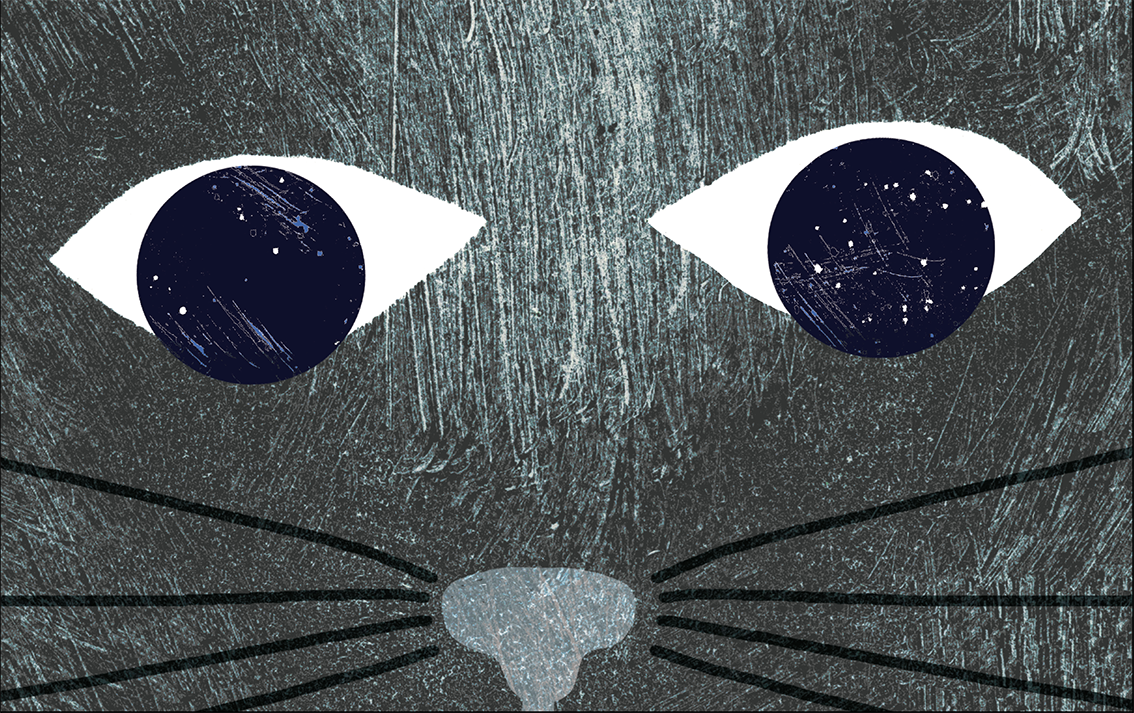
2020 • Topipittori
FÈLICETTE
Félicette is the story of the first cat to travel to space.
TECNIQUE Printmaking1 / Engraving on linoleum2 / Monotype3 / Digital
AUTHOR Elisabetta Curzel4
COLLABORATIONFrancesca Bazzurro5
FOREIGN EDITIONS Yeoyoudang Publishing – Corea
AWARDS Three X Three International Illustration Awards6 2021 — Certificate of merit



Félicette was a Parisian street cat who was launched into space in 1963 by the French on board the rocket Veronique. These were the years of the Space Race7, man hadn’t yet set foot on the moon so in order to understand how this might be possible, they sent dogs, monkeys, a grey rabbit, forty mice, two rats, even fruit and plant flies, in order to test how a living being might survive this incredible journey.
Félicette orbited the earth for 15 minutes on board Veronique and then landed safely thanks to a giant parachute. She became famous for a while but then man landed on the moon and the memory of Félicette, like that of (almost) all the other animals who like her saw space first, were lost.




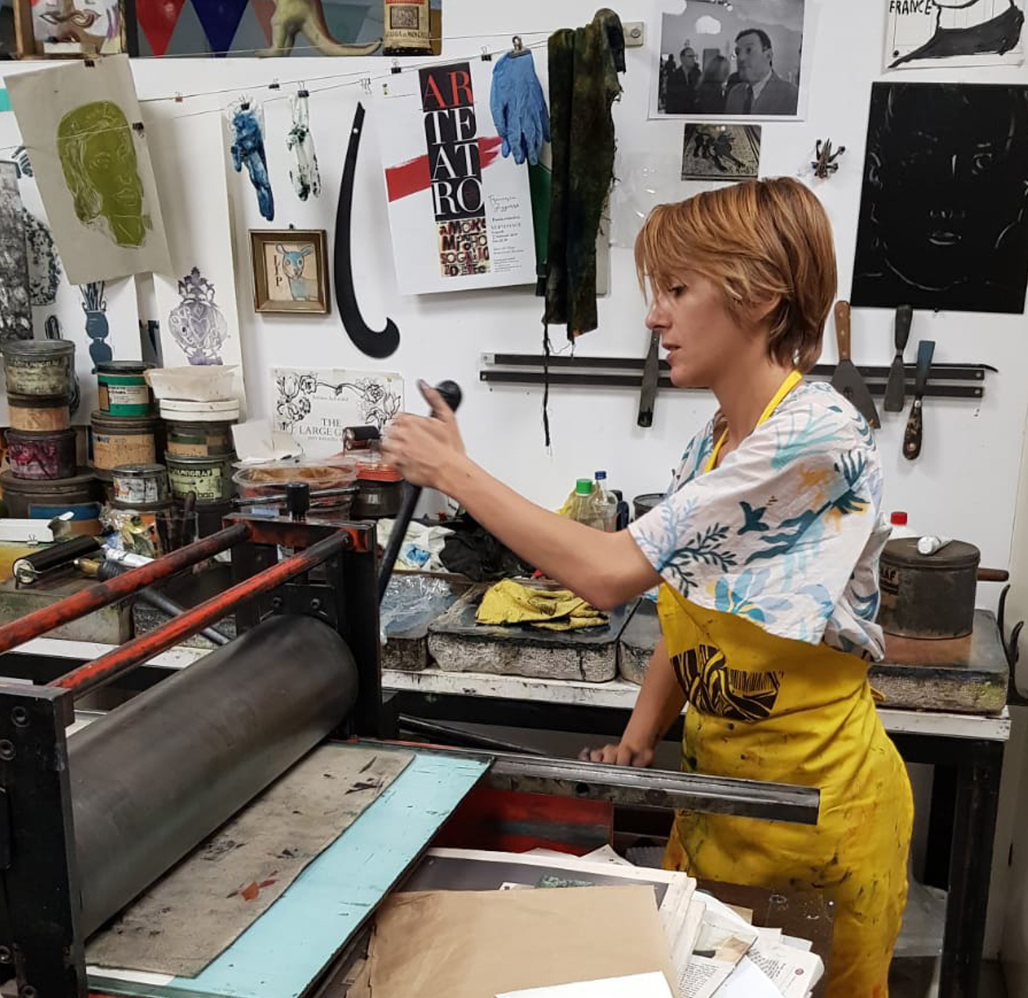
Félicette was created using an articulated process, a kind of constant dialogue between analogue and digital. Every illustration in the book was produced by combining single elements created using printmaking (all kinds of monotypes, engravings on linoleum or other scrap plastic materials), scanned and digitally assembled. The illustrations were then mounted like a collage of elements in one composition, carefully placed and overlapped in relation to one another.
Félicette was born among the pinzini8, the brushes and the magnesium from Francesca Bazzurro’s printing house, without her, Félicette wouldn’t exist.
“The combination of analogue and digital together create an explosion of possibility” says Francesca. This technical and creative process has also made it possible to produce prints which can exist alongside the book.
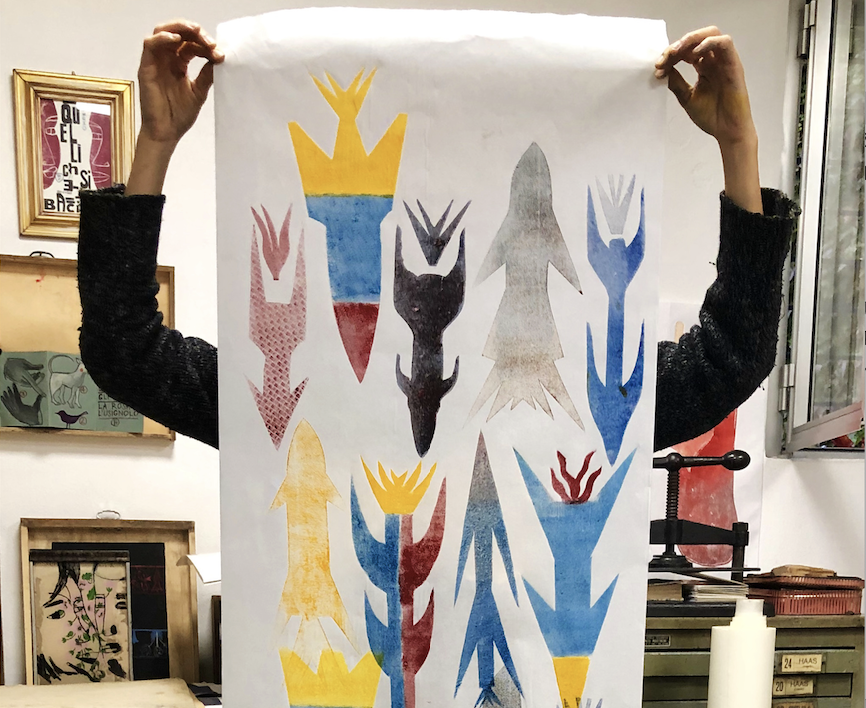
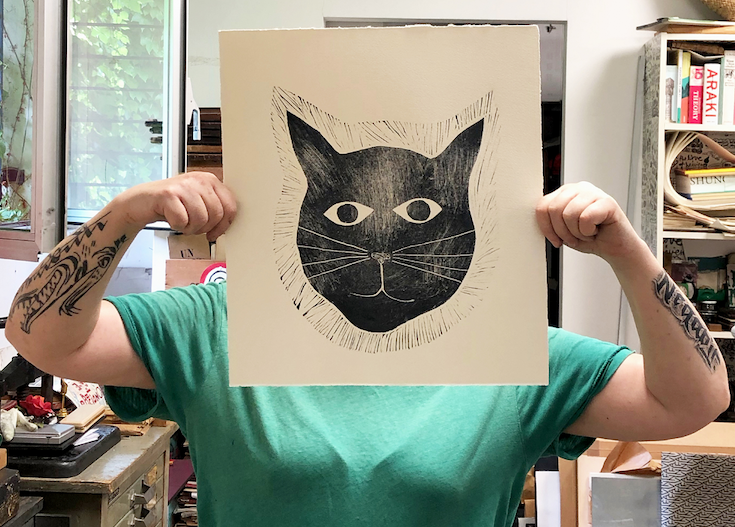
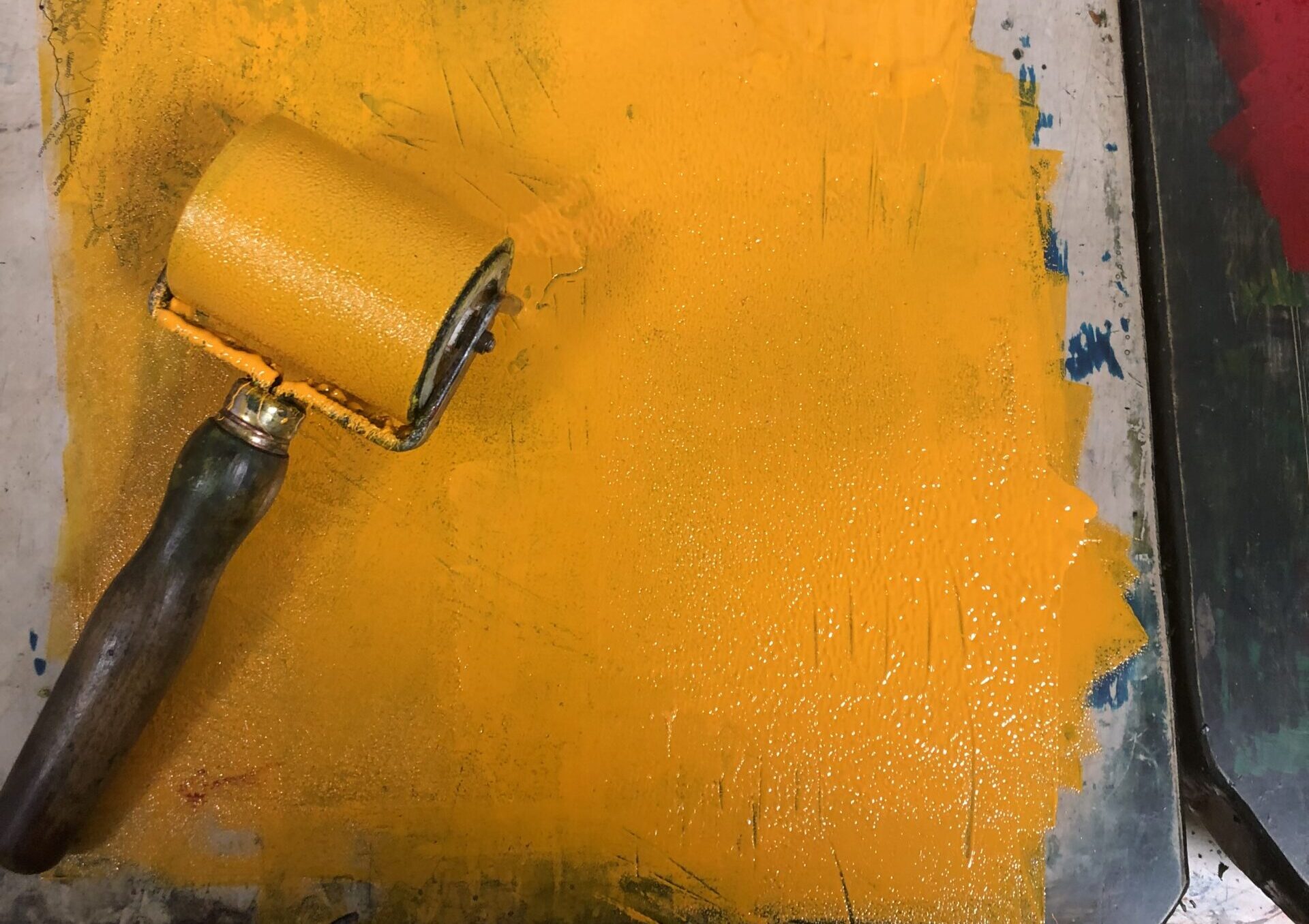
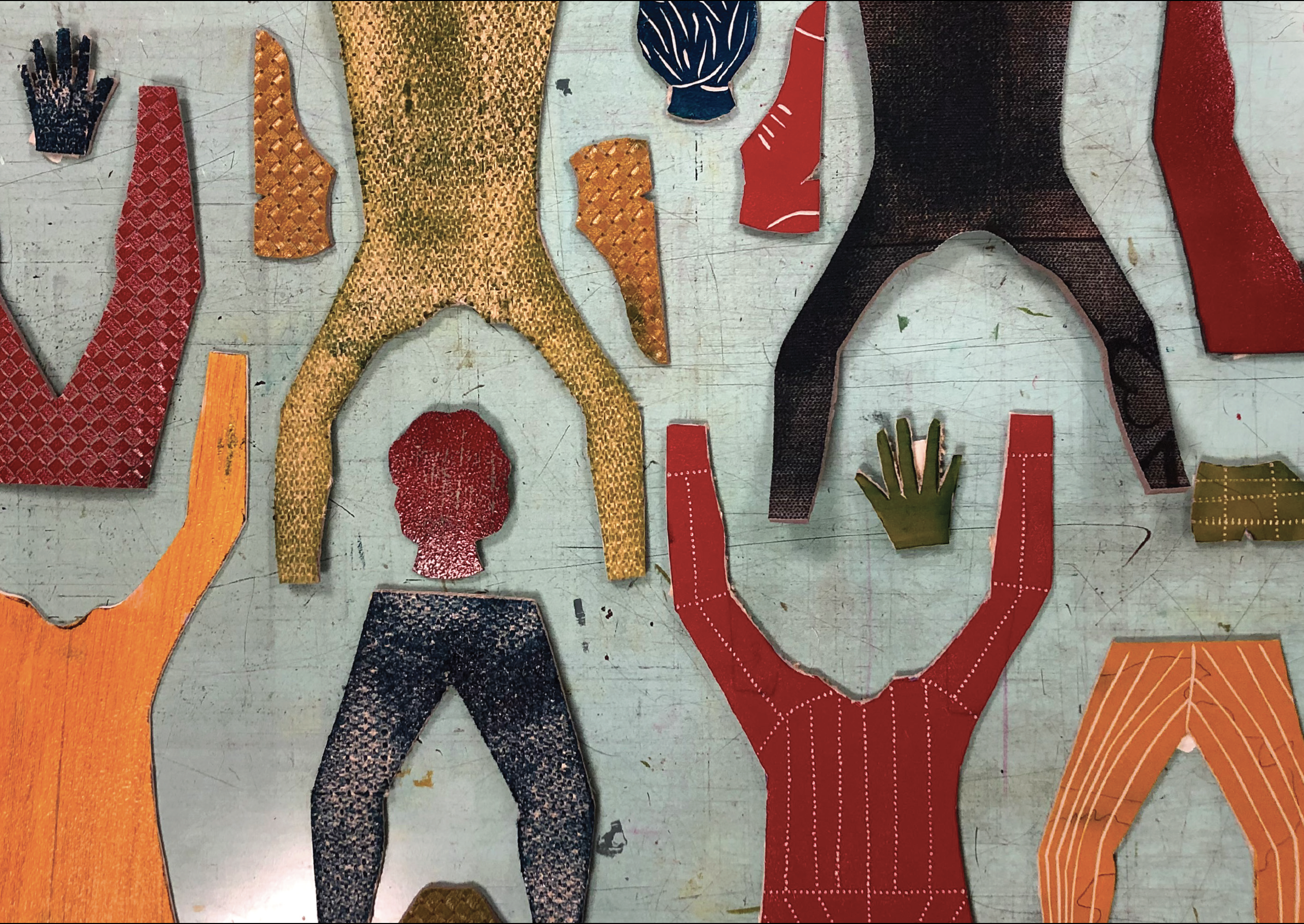
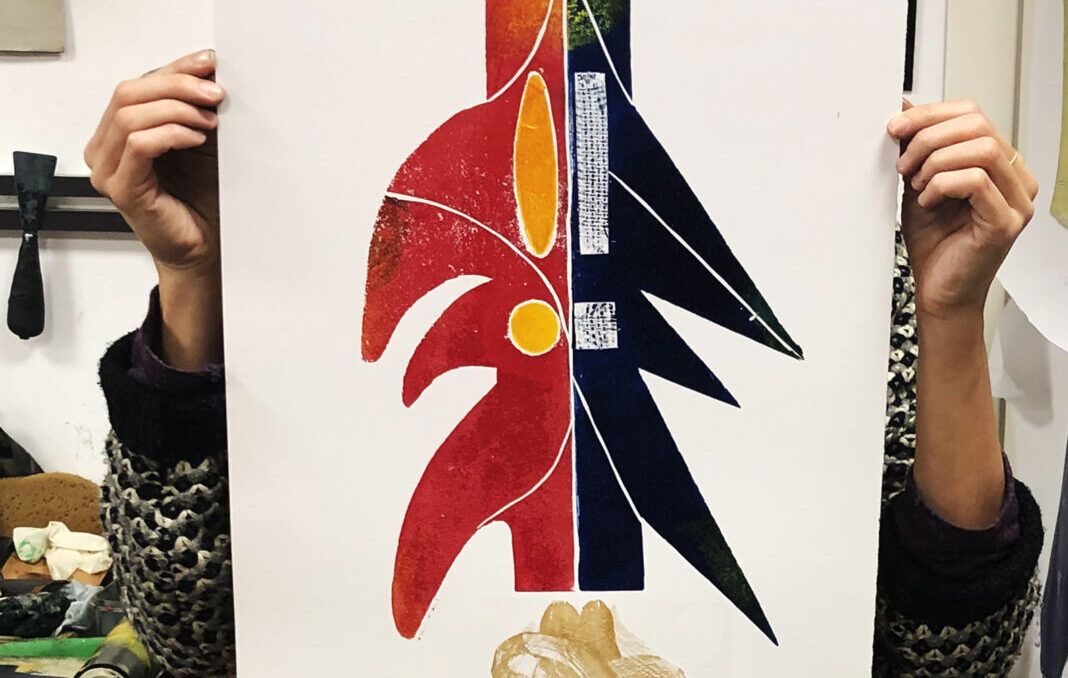
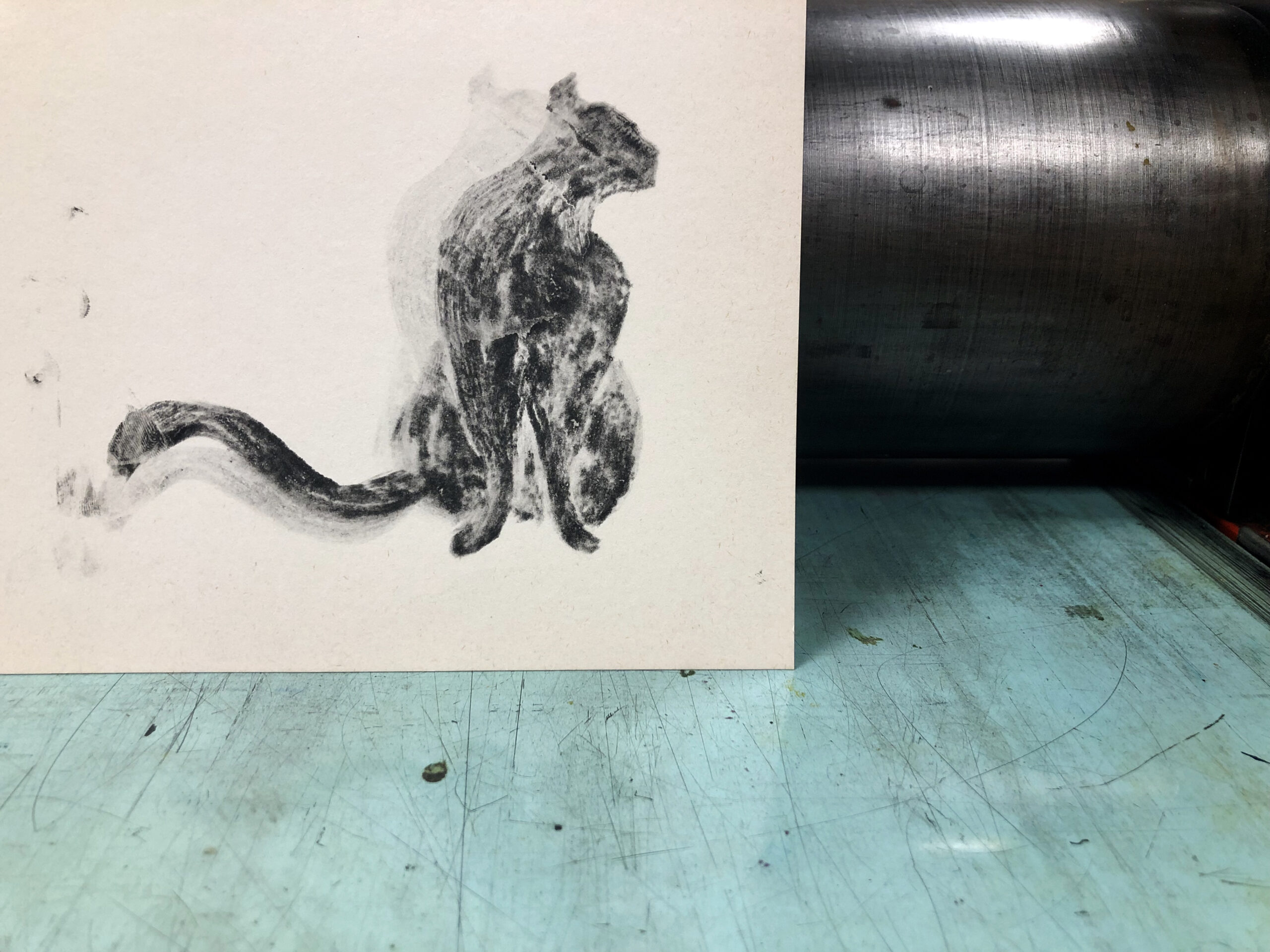
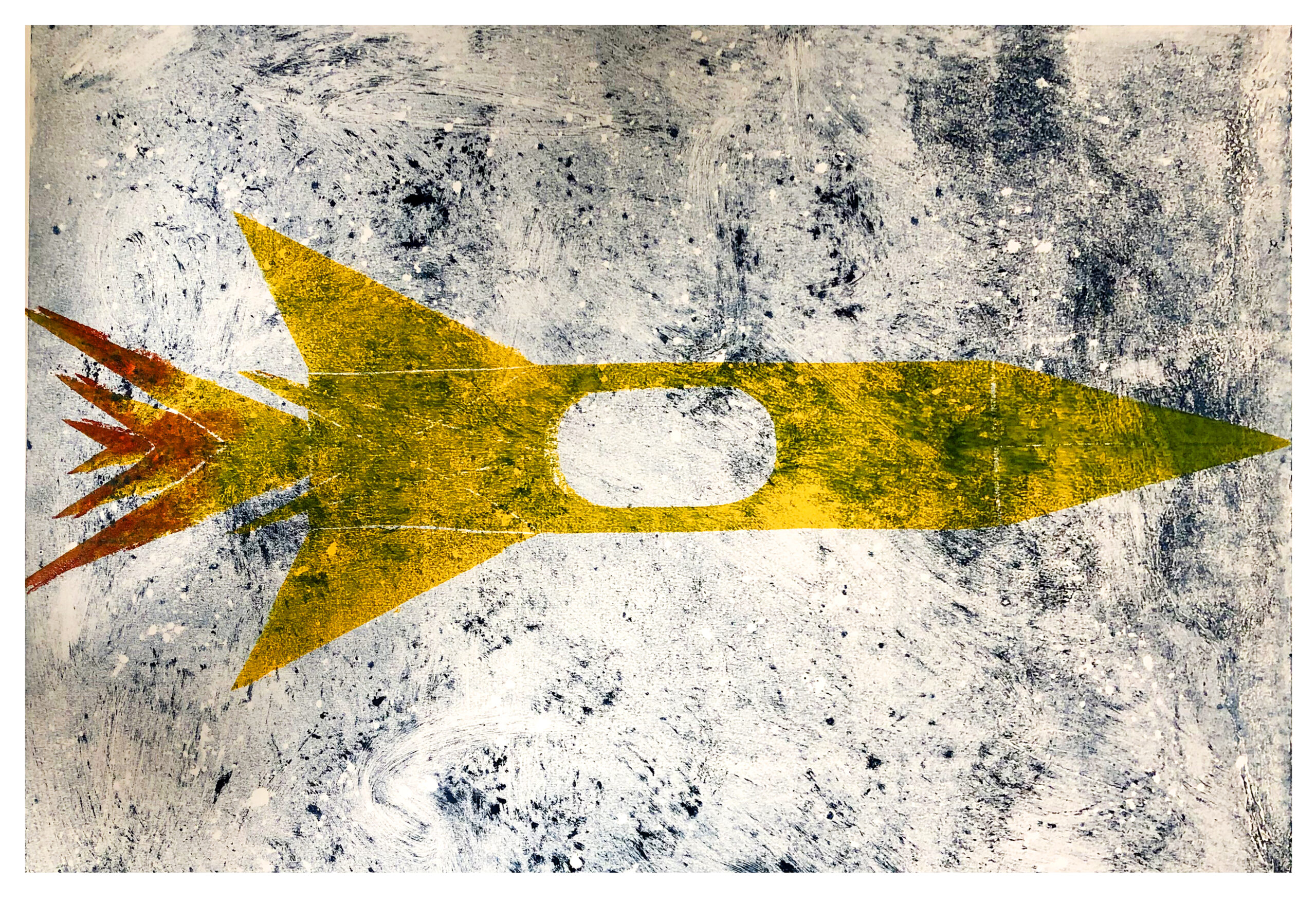
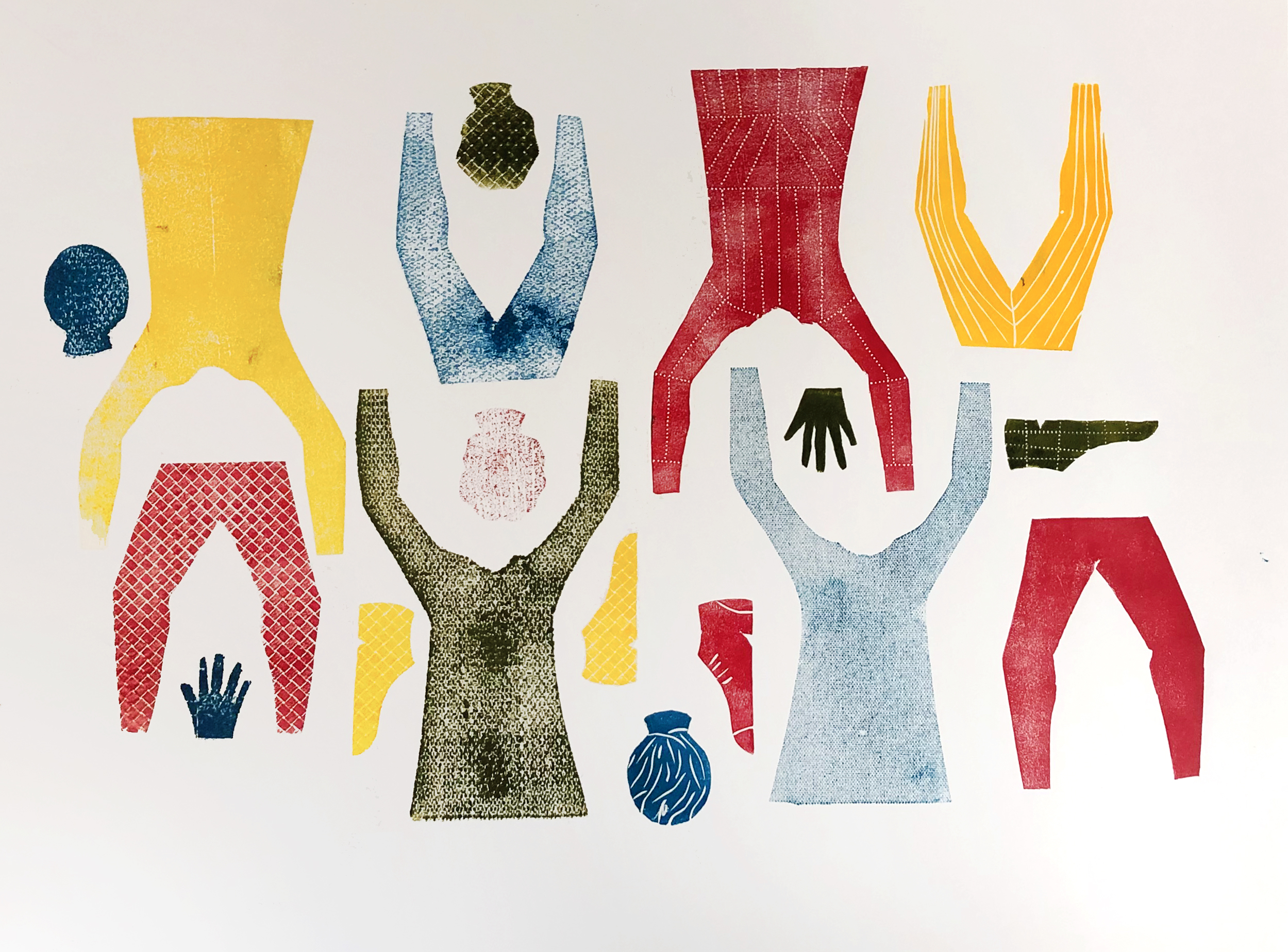

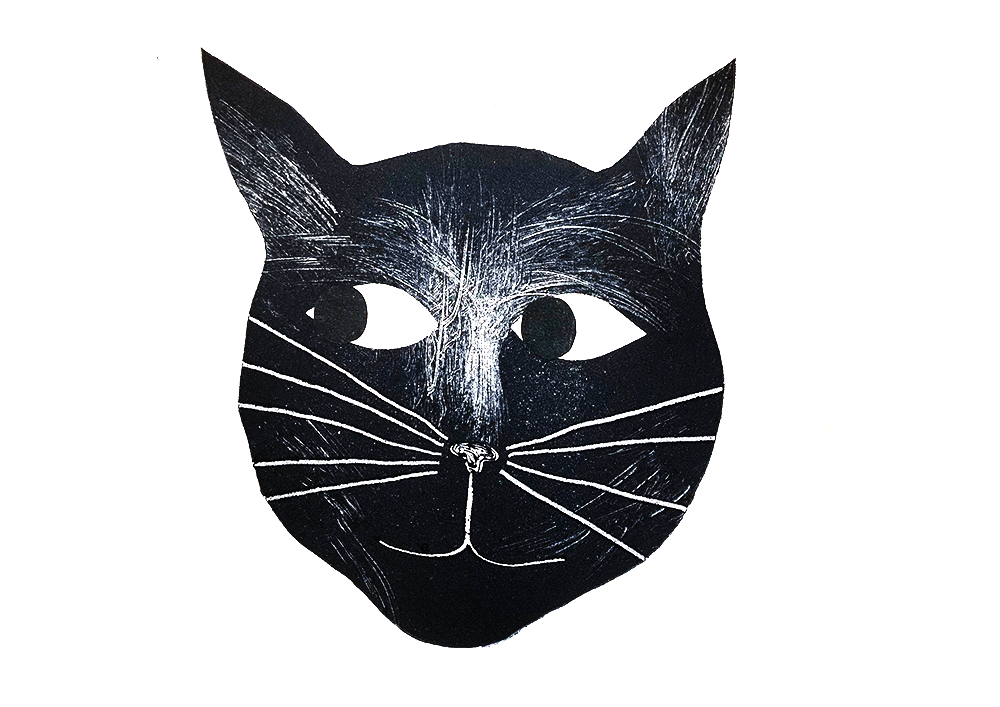
Félicette, come tutti i gatti, ha tante vite: perché Félicette è una storia vera.
